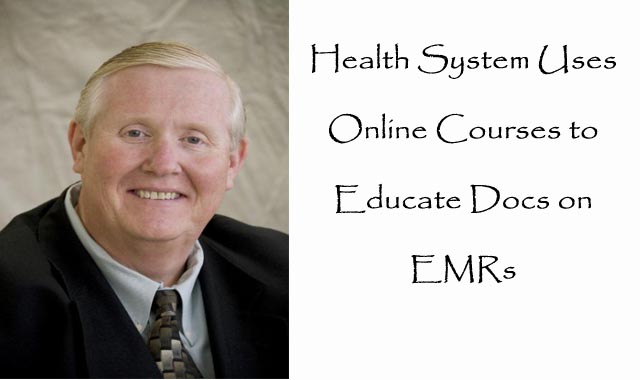To say Infirmary Health was in a time crunch would be an understatement.
The Mobile, Al.-based, three-hospital health system needed to train a staff of approximately 850 physicians in six weeks on how to use its Epic (Verona, Wisc.) electronic medical record (EMR) system.
As we’ve seen in healthcare, training doctors and other clinicians on usage of EMR systems can be tricky. A Healthcare Information and Management Systems Society (HIMSS) Analytics survey of 300 hospitals found that most were unable to attest to meaningful use because of a poorly trained medical staff. Texas A&M Health Science Center (TAMHSC) is starting an academy for this reason alone.
Infirmary did have a leg up on most healthcare provider organizations, however. In 2008, the health system invested in its EMR before the Health Information Technology for Clinical and Economic Health Act (HITECH) was even enacted. According to CIO Eddy Stephens, the health system had a phased approach to implementation. Caregivers other than doctors were trained on it first. The exception was emergency department (ED) doctors, he says, who were also trained. Those physicians not trained on the EMR were able to view the system, but not interact with it.
Eventually though, the health system knew that in order for all of its hospitals to attest to meaningful use Stage 2, it would have to get its physicians using the EMR. As Stephens says, it would have to “rip off the band aid.” One of its hospitals, North Baldwin Infirmary, went live earlier in the year. With a small staff, however, it was easier to provide one-on-one, elbow support for that 65-bed hospital than it would be for its two bigger hospitals, Mobile Infirmary Medical Center (689 beds) and Thomas Hospital (150 beds).
Getting training for providers at those locations would require something that was flexible and efficient for training the masses, Stephens says. The health system tried to bring in droves of physicians to a classroom setting—150 at a time, Stephens says—but it was just too ineffective. Some had paid attention, some had not. The health system’s leadership turned to educational, training software from the Elkridge, Md.-based vendor, ANCILE.

Mobile Infirmary Medical Center
The software was advantageous, he says, because it would allow doctors to learn in private. This kind of flexibility allowed them to learn at their own pace or whenever they chose to take the course. Many trained at their homes, connecting through a virtual private network (VPN), Stephens says.
Infirmary worked with ANCILE over a five-week period to develop the courses for learning its Epic EMR. They created 100, 200, 300 and 400-level courses. The 100-level courses, which included EMR fundamentals like entering a note, were required. The 200-level courses were ones suggested but not required, Stephens says. The rest were essentially electives. Approximately, 70 percent of physicians went through all 22 courses.
Each course is approximately 20 minutes long, says Stephens, with a voice-over providing the instructions. There are three stages of each course: show me, guide me, and let me do it myself. At the end, doctors are tested on that course. Those who pass earn continuing medical education (CME) credits.
Thus far, feedback has been positive from physicians, specifically because of its flexibility, Stephens says. The product allows Infirmary to constantly tweak it, based on what physicians say works best. The health system has been working with physician leadership, including the CMIO, constantly throughout the process to evolve and better the product, he says.
Indeed, this has helped Infirmary overcome any challenges it may have encountered in getting blowback from physicians (something that plagued Athens, Ga.-based, Athens (Ga.) Regional Health Systems). In total, Stephens says there was a leadership committee of 20 physicians from various different specialties. “They were in the physician lounge and if they heard one of the physicians trying to build ground support (against the EMR), they could defuse the tension,” he says. He credits those physicians for building EMR support across the health system.
Still, there were some challenges along the way. Infirmary had trouble getting doctors to come to the 30-minute ANCILE orientation. From now on, Stephens says, that will be a requirement instead of a suggestion.
Despite that, it’s hard not to consider what Infirmary did a success. Besides training those 850-plus physicians in six weeks, the health system cut down in-person training needs by 33 percent. In total, it completed nearly 40,000 training lessons and submitted 12,000 lesson results.
The organization isn’t finished though. Stephens says it plans to expand and tweak the software training program, as it upgrades its EMR system. He says that there opportunities with the way it can train doctors, nurses, and staff to save time.





















